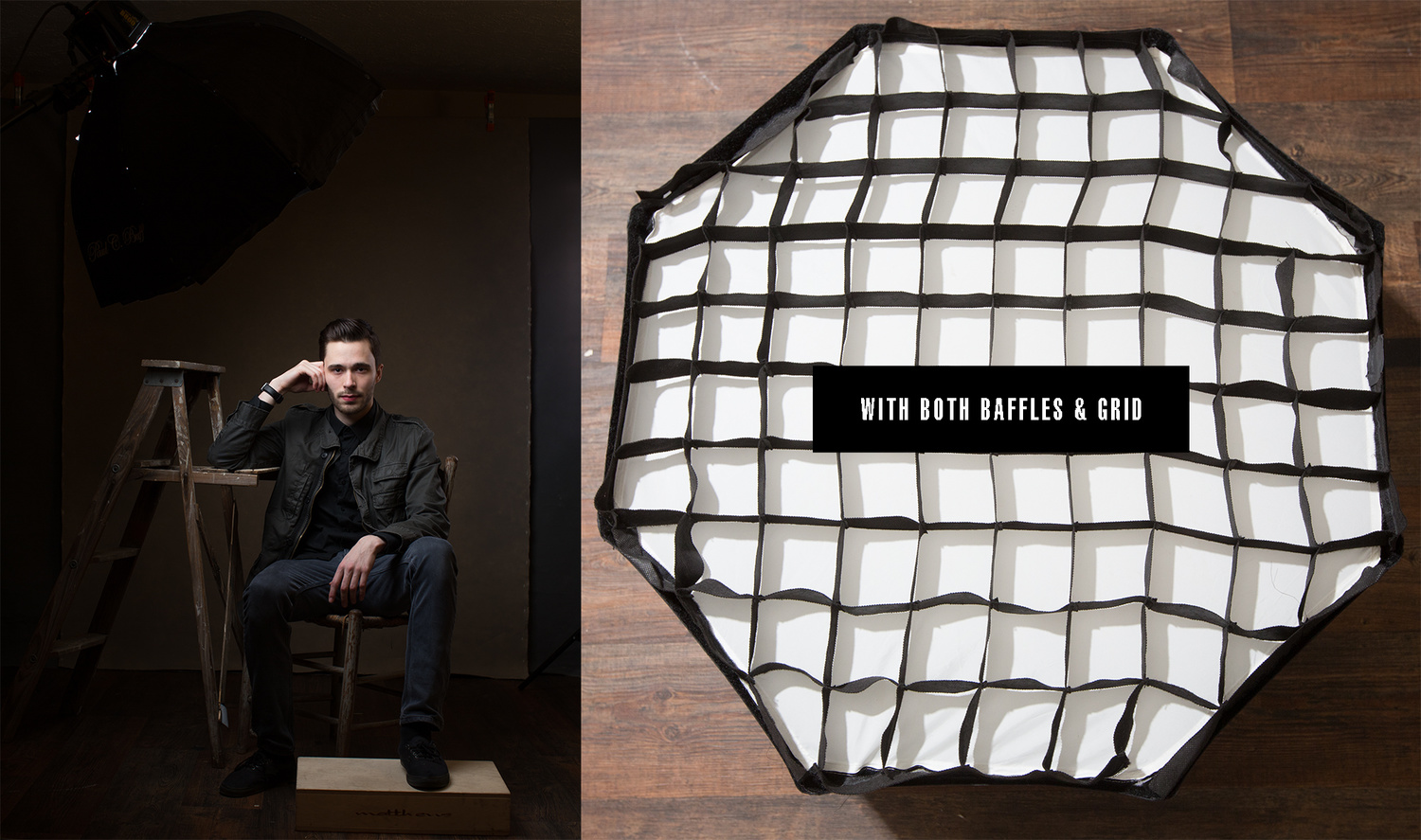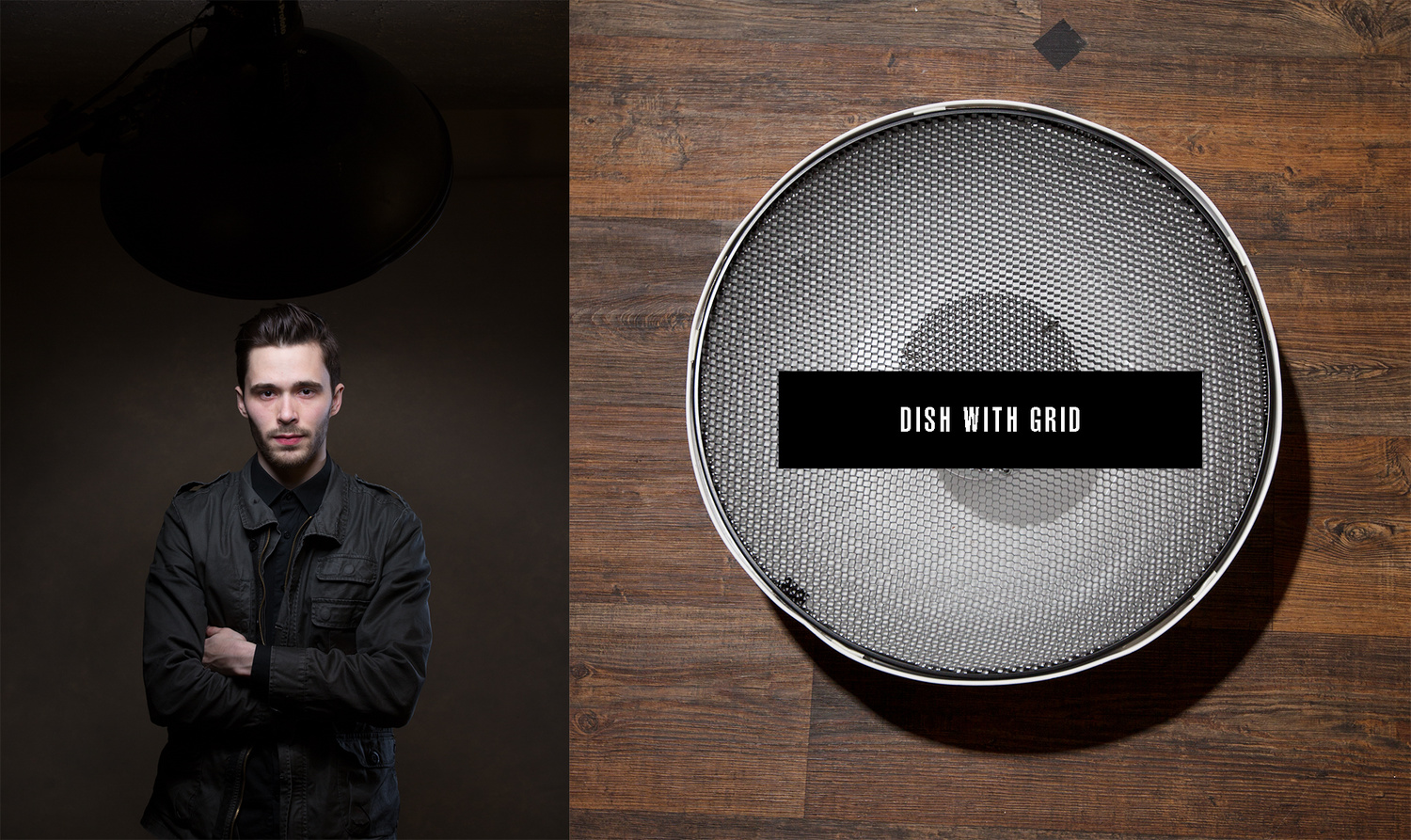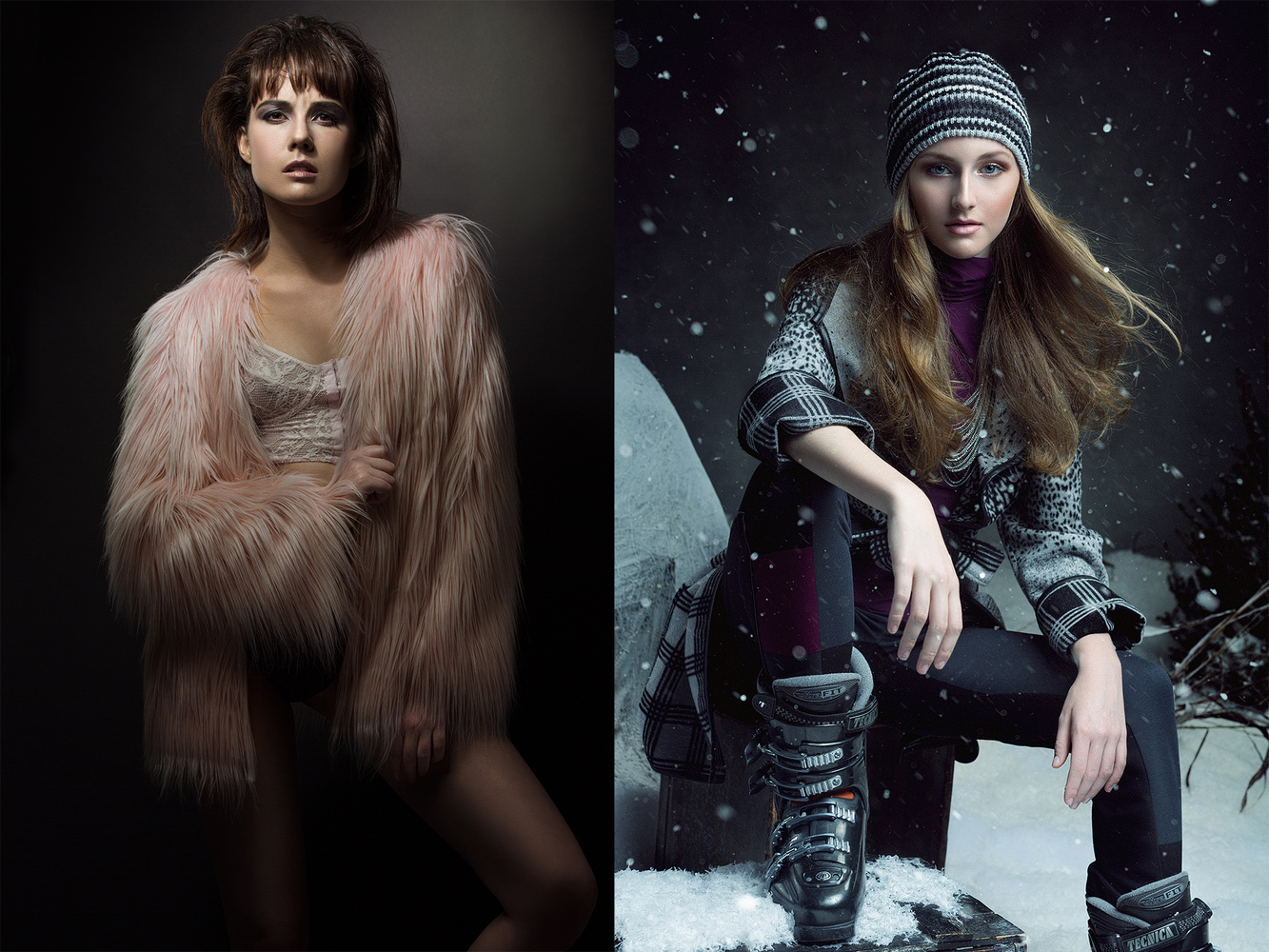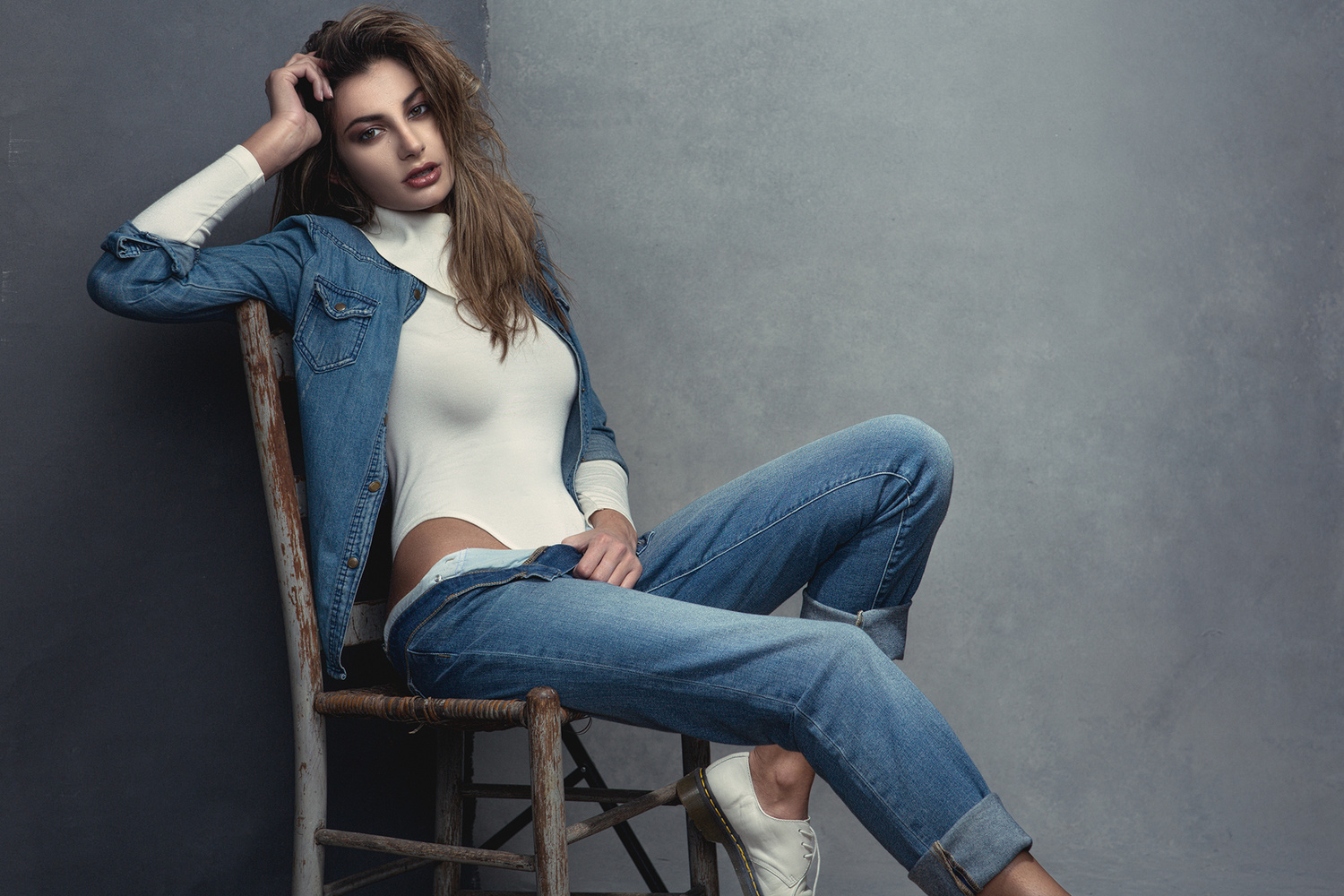Artificial lighting can be overwhelming, there are thousands of options to modify one single light source and there are dozens of companies that claim they have the best product and best bang for your buck. Regardless, photography equipment is expensive and I know I'd rather not waste money on a gimmick product when the same result could be achieved with just the right strobe placement or accessory.
With carpentry there is an right way and wrong way to do things. The right way usually involves a number of different tools. But, in many cases the same results can be achieved with one tool using the right method. The same can be applied to photography. Our eyes and ears get distracted by quick and witty gear advertising, but many photograpers don’t appreciate the tools lying in their closet.
When I first started dabbling with artificial light some 3 years ago, I used a beauty dish for almost every project. I really didn’t know its power or versatility; I just liked the output. Soon after, I found a new love for the Photek Softlighter and hard fashion lighting. Unfortunately, my beauty dish didn’t end up in the closet; it ended up in the trash.
I’ve spent the better part of this year "researching" the versatility of a simple Octabox and Beauty Dish. Two standard modifiers used by everyday studio photographer’s world-wide. What I found opened my mind and made me realize the basics of light; I don’t need a 10-foot Parabolic Umbrella or a 6-foot Scrim to achieve the right mood. When I started exploring the Profoto Softlight Beauty Dish and a Paul C. Buff Octabox I was skeptical, it took a lot of experimentation, but I came to realize why so many photographers love that style of light.
Octabox
It’s an essential tool in every photographer’s studio. For those new to the game, an Octabox is an octagon shaped modifier which creates similar light to a rectangular Softbox. This particular Octabox is manufactured by Paul C. Buff, a company that produces strobes, modifiers and accessories for the intermediate to pro-level photographer, who isn’t looking to take out an extra mortgage on their house. Their line of "Alien Bee" and "Einstien" strobes are good quality, which are backed by an even better customer service. The best part of their product line is their collapsible modifiers. I travel for a living and most of my assignments are on location, the Paul C. Buff modifiers break down with a simple turn of a screw, which is exactly the type of gear I need. No annoying rods, crumpled baffles or speedrings.
The Octabox comes with two diffusion baffles and the Grid is always sold separately. The inner diffusion baffle reduces the hot spot caused from the bare strobe and speads the light evenly to the main diffusion baffle. It also adds a second source of diffusion for a nice soft light.
Octabox With Both Baffles and Grid
The light is soft, but the honeycomb-style Grid provides direction to the light and reduces spill onto the background and floor.
Octabox With Both Baffles
The light is soft and natural, the light spills onto the background and floor producing a more rounded-wrapping light.
Octabox With Inner Baffle Only
While the light remains somewhat soft, it resembles the look of a large Parabolic Umbrella. It is a stronger, more directional light. This could also be considered an amplified Beauty Dish.
Octabox Bare
Without either sources of diffusion the Octabox acts like a large silver reflector. The light is controlled, but hard.
Whatever the subject matter might be, an Octabox is a flexible modifier that can adapt to any need, just open it up and start experimenting. Once you've nailed the type of modification the options are endless with placement. Get it close and pull it towards the camera, you may be surprised with the results.
Beauty Dish
I've always been fascinated with Beauty Dishes and how they shape light. I guess you could say I have a love-hate relationship with them. I once disowned Beauty Dishes to only fall in love with them once again tenfold. A Beauty Dish is essentially an aluminum shell with a elevated circular plate that "softens" the flash. It acts as a parabolic reflector providing a contrasted, dramatic mood. I'm wielding a Profoto Softlight 20.5" Beauty Dish; it's costly, but you get what you pay for. The best part about a Beauty Dish is that it can provide a wide-array of light modification. You can achieve anything from soft wrapping light to a hard contrasted style of light, just by moving the dish a foot and tilting it an inch.
Beauty Dish Bare - Soft
With the dish overhead and the subject in the shadow of the elevated circular plate, the dish provides a nice soft light that wraps around the face. However, with a bare dish there is a lot of spill and in this case the spill causes a spherical shadow on the background from the circular plate. But, that could be a desirible gradated effect.
Beauty Dish With Grid
A Beauty Dish with a 25° Grid is one of the most dramatic forms of modification available. The spill is eliminated and the direction of the light source is far more controlled.
Beauty Dish With Diffusion Sock
Once a diffusion sock is placed over a bare beauty dish the results can be similar to a softbox, but far more controlled. The light creates a nice contrast, but is rounded and wraps a face well. Placement is an important element for good results, an overhead boom is the best route.
Beauty Dish Bare - Hard
This is where the versatility of a Beauty Dish really kicks into high gear. Simply moving the dish a foot to the left provides a harder more dramatic contrast of light. The drama is created by the "parabolic spill" coming form the outer rim of the dish. It's not the full blunt of a bare light, but a controlled hard light. If your subject is close to the background, just watch the shadows, they tend to be... interesting.
Beauty Dish Bare - Hard - Side
Moving the dish around the face to the left(or right) then pulling it a foot forward so the "parabolic spill" illuminates the face can create drama as well as some interesting shadows on the background.
Beauty Dish With Grid - Side
Once a Grid is placed over the Beauty Dish, the "parabolic spill" is controlled and the image becomes far more dark and dramatic.
You're the carpenter and craftsman of the photograph. A carpenter can use a hammer and nail or a drill and screw, both have their proper applications. But, what really matters is how a nail or screw will effect the overall construction. Every modifier has varying forms of light-shaping and usually the necessary abilities to get the job done. So, be the carpenter, build your light and you might find yourself dusting off that old Beauty Dish in the closet.
If you're passionate about taking your photography to the next level but aren't sure where to dive in, check out the Well-Rounded Photographer tutorial where you can learn eight different genres of photography in one place. If you purchase it now, or any of our other tutorials, you can save a 15% by using "ARTICLE" at checkout.



















Finally! Thank you clay for this wonderful piece.
Thank you for reading Bamidele! Means a lot to me!
Great write up, really appreciate the breakdown!
Curious what beauty dish you would recommend if one is shooting with Einsteins?
Thank you
Thank you Christopher! I definitely can't recommend the Paul C Buff Beauty Dishes. Check out the Mola series for pro-quality or on the inexpensive end, the Fotodiox Beauty Dish.
I have a Paul C Buff beauty dish a friend gave me because he no longer used it. He never did say why he doesn't though.
what is it specifically that you dislike about them?
So you do think the Mola BDs are worth the price?
Good question. I think any product like that is an investment. I know many photographers that stand behind those dishes. I don't own one so I can't say for sure, but the imagery I have created with one could be worth the price tag.
great advice. thank you for sharing.
Thanks for reading Josh!
Great article, well written, and fantastic breakdown of visual guides! Kudos!
Also, who's that Model? :D
Thank you brother! That model left his cherry in NYC.
Great article Clay. Very thorough and helpful. Much appreciated.
Thank you so much Terrence!
Amazing breakdown, I wish there where more articles like this. Actually doing a shoot next week and the beauty dish will be my main tool (Because its less likely to get blown down from the wind, easier to set up on location, I'm going for the dramatic fashion hardlight look, and I dont have a larger softbox for my strobes, just my speed lights and its small).
However I plan on picking up and octobox soon, any size you would recommend from Paul C Buff? I see they have several sizes and while the large one will produce the softest light is it worth the hassle dealing with one that big or would you all recommend maybe one of the smaller ones like the 36in.
Thank you Austin! The 35" is the size seen above, which I think is perfect. I don't use big modifiers unless I'm shooting a group of 3 or more. The 47" from PCB is big. Hope this helps and good luck on the shoot!
Finally someone has given this modifier the credit it's due! I love the versatility of the octabox from Paul C Buff - 3 modifiers in one. Most of my work is shot with this.
Keep on writing these articles, Clay!
Great work Aaron! Thanks for reading and definitely thanks for sharing!
I might need to make it down to KY from OH for a workshop. It's awesome seeing how much you're accomplishing!
Would love to have you! I will be traveling in 2015 though!
Nicely put sir.
Thank you Wayne!
Beauty dish design is rather simple. What would make one great and another one crap in terms of light quality. I agree the original PCB b dishes are better constructed than their current ones.
What would make the original PCB beauty dish lousy and a Profoto dish amazing ? They look about the same.
Thanks for reading Rex! It's pretty simple; the build quality. I owned a PCB Dish for about 6 months and it fell apart, I've put the Profoto Dish through hell and it's standing strong.
....what about light quality, Clay ?
Side by side they look almost the same. My version 1 PCB seems plenty sturdy. I am aware the Molas are very popular, but I can't help wondering how light from the Profoto would look much different than the similar looking old PCB dish. Nice article, thanks !
go Clay! just watched the Peter Hurley Illuminating the Face part on beauty dishes and learned a ton on best use
Thanks Simon!
so good! thank you
Thanks for reading Avan!
This article works wonders because of all the examples. It really helps visualize what ia possible and the diffefent looks
Thank you Jeff! Cheers!
Hi Clay!. Thank you.. Your work and explanations are always inspirational. I wiil like to ask what's the best beauty dish for flashguns for off camera lighting. Thank you.
Hi Clay. Having just invested in a beauty dish with grid and diffuser I am super stoked to find this. What a great, simple breakdown. Thanks mate!
Incredible work Clay! Very helpful and beautiful pictures! I'm very intrigued with the background what material is that? Is it paper? What kind of paper?
What size octabox do you suggest for full bodies and outside portraits?
Nice article that is helpful, pla how much is it. I need it。